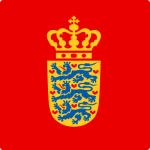January 24, 2015–August 30, 2015
“HOT TO COLD is obligatory for anyone who cares about architecture and museums.”—The Washington Post

The exhibition, HOT TO COLD: an odyssey of architectural adaptation, takes visitors from the hottest to the coldest parts of our planet and explores how BIG’s design solutions are shaped by their cultural and climatic contexts. More than 60 three-dimensional models will be suspended at the second-floor balconies of the Museum’s historic Great Hall in an unprecedented use of this public space.
Founded in 2005 by Danish architect Bjarke Ingels, BIG has taken the world by storm with its seductive, sustainable, and community-driven designs. Ingels, named Innovator of the Year in Architecture by WSJ Magazine, has coined the phrase “hedonistic sustainability” to reflect his philosophy that environmentally responsible buildings and neighborhoods need not be defined by pain and sacrifice. Ingels says that architecture is not just about decorating a box, but also about reconfiguring things for the better. He explains, “If we’re extremely successful we can maybe build 50 structures in our life span. But if we can make something that inspires others, it might be the beginning of a new species that can evolve and migrate, and we can make a much more substantial impact on the world we play a role in creating.”
BIG’s projects take shape from Copenhagen to Manhattan, from Shenzhen to Paris, and soon in Calgary and Vancouver. Now, with a major part of the practice located in New York—and a major stake in Washington, D.C.’s infrastructure as the designer of a $2 billion National Mall and Smithsonian refurbishment—a BIG influence on American architecture and urbanism has begun.
HOT TO COLD premiered 20 of the studio’s projects, interpreted through Iwan Baan’s masterful photography of BIG’s built work, films by Ila Bêka and Louise Lemoine, and the Grammy Award-winning graphic artist Stefan Sagmeister’s design for the accompanying catalog by Taschen.
Sponsors
 |
 |
 |
 |
 |
|
 |
 |
 |
 |
 |
 |
 |
 |
|
 |
 |
 |
 |
 |
 |
 |
 |
 |
 |
 |
HOT TO COLD: an odyssey of architectural adaptation is generously sponsored by Realdania, National Endowment for the Arts, Danish Agency for Culture, The Durst Organization, Howard Hughes Corporation, Junckers, Terra Group, the Graham Foundation for Advanced Studies in the Fine Arts, Graphisoft, The Third Fate, Queen of Denmark and HRH Prince Henrik’s Foundation, Rose Rock Group, Albany, Arcadis, Fritz Hansen, Furniture from Scandinavia by Annette Rachlin, Georg Jensen, Louis Poulsen, Ramboll, SAS, Thornton Tomasetti, AIAIAI, Fritz Hansen, LEGO, HAY, Visit Denmark, Carlsberg, and Holcim. Additional gratitude to the Embassy of Denmark for its assistance and support.

